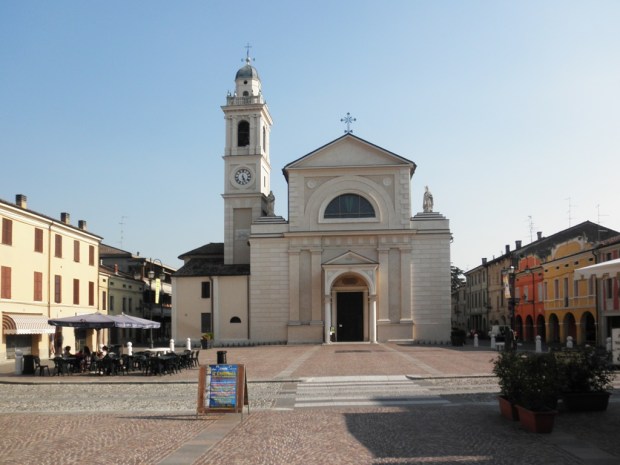Lenten Campaign 2025
This content is free of charge, as are all our articles.
Support us with a donation that is tax-deductible and enable us to continue to reach millions of readers.
In the weeks before Christmas, bakeries in the Italian regions of Emilia-Romagna, Liguria, Lombardy, and Tuscany proudly display spongata, a spongy cake made with honey, dried fruits, and nuts, and traditionally eaten for Christmas.
Spongata, which takes its name from its “spongy” texture, has deep roots that go back all the way to the Roman Empire, but like many other Italian desserts, it owes much of its preservation through the centuries to Catholic monasteries.

Historians report that an ancient version of spongata was consumed during festivities held in ancient Rome. Ancient Romans particularly appreciated the way this early version of spongata could be preserved for days after it was baked.
During the Middle Ages, spongata became a popular treat for pilgrims walking the Via Francigena, the pilgrim route that connects the city of Canterbury in the UK with Rome, as this long-preserving protein-rich treat could sustain pilgrims for weeks.

Pilgrims brought this ancient cake to towns close to the Via Francigena and locals started to recreate their own versions of the treat. It is especially in the town of Brescello, in Reggio Emilia, that spongata found fertile ground for its evolution. Here, in the Benedictine convent of St. Benedict, Abbess Serafina Bonino played an instrumental role for the diffusion of spongata.
According to local histories, in December of 1480 the abbess was looking to bake a treat as a gift to the monastery’s donors without breaking the bank. Inspired by the popular pilgrimage treat, she decided to bake her own version, so she asked the Benedictine nuns to gather hazelnuts, walnuts, and honey. Then, on the large tables of the convent’s kitchen, she reworked the centuries-old recipe to create a sweeter and more spongy version of the ancient treat.
The Benedictine version of spongata proved really popular with both nuns and the monastery’s donors. Over the course of the centuries, this round spongy cake became an iconic Christmas food.

Today, spongata is a popular Christmas treat in cities and towns across central Italy especially in the regions of Emilia-Romagna, Lombardy, Liguria, and Tuscany. It’s not just bakeries that get to work to produce this centuries-old treat.
Each family makes its own version of spongata – based on recipes that are usually transmitted orally from one generation to the next – and brings it over to friends and family that can engage in a sort of “spongata tasting.”
Recipe
Those who make spongata, first combine all the filling ingredients (nuts, candied fruits, breadcrumbs) in a large bowl. After mixing, the filling rests in a cool, dry place for a few days. After the filling has rested, it's divided into round-shaped molds.
The dough is prepared by mixing flour, butter, sugar and dry white wine. Then one ball of filling is placed on a dough circle and pressed down, shaping it into a compact, round form. It's baked at 160°C (320°F) in a fan-assisted oven for about 15–20 minutes. Enjoy your spongata!








